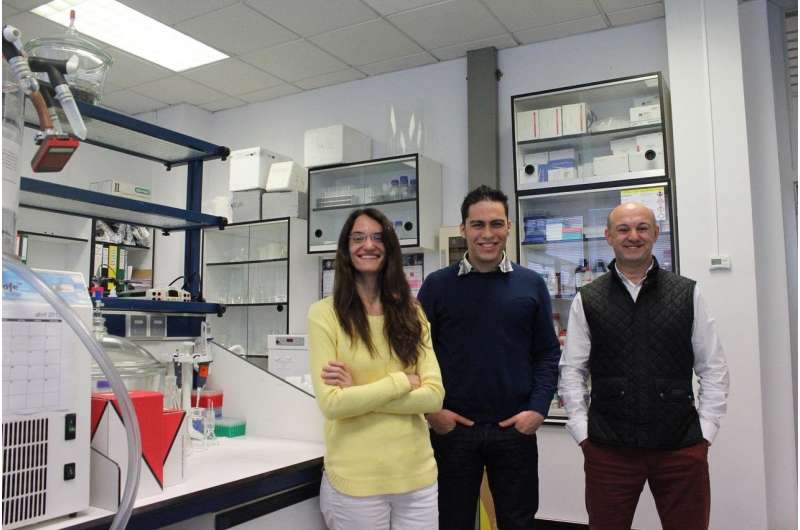Credit: Asociación RUVID
Researchers at the Chemical Technology Institute (ITQ) of the Unviersitat Politècnica de València and collaborating institutions have developed nanoparticles that improve the contrast in magnetic resonance scan images. Measuring 90 nanometres, their clinical use could facilitate the diagnosis of hepatic, pulmonary and cardiovascular pathologies, as well as many types of tumours. Their work has been published in Nanoscale.
Pablo Botella, head scientist at the CSIC's Chemical Technology Institute, explains that magnetic resonance imagery is a clinical diagnostic of great importance. "However, obtaining high-quality images is usually difficult due to a lack of contrast and other changes associated with the various pathologies that are being studied, which can lead to a loss of sensitivity and complicate the diagnosis."
In order to tackle these shortcomings, contrast agents based on soluble gadolinium (Gd³+) chelates are commonly administered intravenously. These agents make certain hidden body structures or tissues visually discernible. These changes are temporary and facilitate the clinical diagnosis, but the use of these products may not be advisable in some cases, specifically in allergic patients or those with kidney problems. "Furthermore, even though gadolinium improves the positive contrast of the images (clear areas), it hardly affects negative contrast (dark areas). In this sense, the use of a non-soluble form of gadolinium combined with a dark contrast agent would avoid these problems, and this is what we have developed in this project," explains Botella.
Hybrid nanoparticles
The research team, coordinated by the Nanomedicine group of the ITQ headed by Pablo Botella, has developed hybrid nanoparticles that contain two contrast agents, gadolinium (Gd3+, which increases positive contrast) and iron (Fe3+, which raises negative contrast), protected by a stable silica cover. Comprising a structure with a high level of bundling, the nanoparticles cause a synergic effect that notably increases their magnetic activity, leading to a larger increase of positive and negative contrast in magnetic resonance images compared to commercial products.
Moreover, the cover makes it possible to add molecules that stabilise the particles in physiological environments such as polyethylene glycol, as well as molecules that will direct the product to a specific therapeutic target. In this respect, "nanoparticles can selectively accumulate on certain pathological tissues, as long as there is an appropriate guiding molecule. This would be useful for the diagnosis of several types of cancer; we are currently working on its use for prostate cancer, and are obtaining positive results," adds Botella.
The results obtained in animals makes it possible to clearly observe that after the intravenous administration of this new contrast agent, there is a significant improvement of positive and negative contrast in tissues where the nanoparticles accumulate.
On the other hand, says Eduardo Fernández of the Bioengineering Institute of the UMH and CIBER BBN, "our results suggest that this new type of contrast agent based on hybrid nanoparticles is not toxic for the animals in which it was tested, and the nanoparticles are completely eliminated through biliary and kidney activity, which attests to its great potential."
"The results obtained on an animal model suggest a variable improvement of up to 78 percent of the signal intensity in magnetic resonance images depending on the tissue, making clinical diagnosis easier," concludes Pablo Botella. The signal intensity increase involves a raise in contrast, which in turn improves resolution, allowing the radiologist to clearly differentiate between pathological tissue and background noise.
Journal information: Nanoscale
Provided by Asociacion RUVID




















